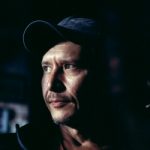Your Face Is Missing: What Happens If You Leave Only The Photo Manipulation

Ukrainian photographer based in Kyiv. Andrey has been engaged in documentary photography since 2001, and since 2014 he has been working on personal documentary and art projects. Winner of the Grand Prix "Photographer of the Year of Ukraine 2016" for his project "Amulet" (2015). His works were exhibited in the USA, Canada, France, Greece, Sweden, Germany, etc., and published in The New Yorker, Der Spiegel, Re: public, Macleans, Wired.
— As a photographer, I grew up in the world of documentary photography and photojournalism — a world with its own rules that exclude any interference with the image (or event). Fixing contrast and saturation are the only allowed elements of postproduction in this world. Over time, it became obvious to me that any photograph is somewhat subjective and, in one way or another, it does not represent an exact copy of reality. A careful look at the World Press Photo galleries made it clear that the rules are easily “stretched” in the right direction. Someone gets by with a simple vignette, while someone extensively manipulates lighting and color. Instruments from a dark room with a red lantern moved to a light one with a thick gray curtain, a tablet, and a calibrated monitor.
After digging deeper in this direction, I found out that all my knowledge about color in the digital world (which was of primary interest to me) is superficial and erroneous. I eagerly began to study the toolkit – friends and YouTube gave me direction. It turned out to be an abyss that swallowed me completely. I got interested in retouching, and after a while, I practically stopped photographing and started processing other people’s photographs instead. Some of the pictures that I worked with were headshots – everyone needs beautiful avatars for social networks and websites.
The result is always checked against the original during computer retouching: everything should be natural and imperceptible at the end. To do this, compare two images, “raw” and retouched, on different layers. Turning those layers on and off alternately allows you to see the difference between them. One day I subtracted the one from the other and got a picture of my photographic intervention: that’s how the ‘Avatar’ project started.
The digital world will always be a little fake, and our digital versions are better than their “analog counterparts”: smarter, kinder, fairer, more attractive. Our virtual image begins with an avatar, usually a slightly embellished portrait: fewer wrinkles, age spots, and dark circles under the eyes. Pleasant light faces, digitized and improved duplicates of real people – in the words of philosopher Jean Baudrillard, “more real than real,” more attractive than the original.
In the process of retouching portraits, this invisible make-up always leaves a digital trail — a neon scattering of pixels resulting from subtracting the original from its improved version, a simulacrum that masks our reality.
The digital world will always be a little fake, and our digital versions are better than their “analog counterparts”: smarter, kinder, fairer, more attractive.
Translated by Lubov Borshevsky
New and best




